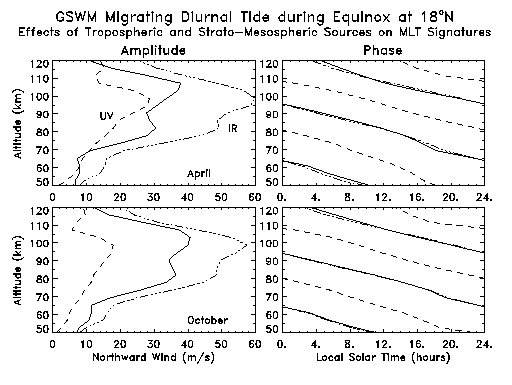

However, the responses to these two driving sources are approximately 12 hours out of phase, so that they destructively interfere with one another, and the effect of the combined forcing reduces the amplitude of the diurnal tide relative to what it would be under IR forcing alone. In the figure, the dashed line depicts the diurnal reaction to the heating caused by ozone absorbing UV radiation, the dashed-and-dotted line depicts the heating caused by H2O absorbing IR radiation, and the solid line is the response to their combined forcing, which corresponds with the phase of the IR forcing alone.

The tide's amplitude increases with altitude, up to a peak between 105 and 115km, at +/- 30 degrees latitude (zonal); +/- 20 degrees (meridional), and at the equator for temperature and vertical velocity fields. The maximum amplitudes occur during equinox (April, October) at approximately 45m/s (zonal), 65m/s (meridional), and 15K. These values are on the order of twice the solstice (January, July) values.
Graphical output from the GSWM illustrates these characteristics.